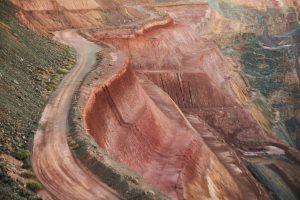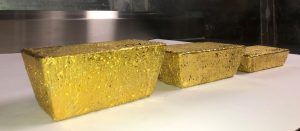It is the challenge facing the junior mining sector – how to back up the market excitement generated by an initial discovery with sustainable returns for shareholders?
The reality is that the maiden sugar hit – usually provided by a mineral discovery – quickly runs out of steam as the project owner embarks on the lengthy and often tedious process to determine the commerciality of the discovery, spends millions of dollars on necessary feasibility studies and complies with regulatory frameworks long before the board can make a final investment decision.
Directors’ drill hole specials only keep the steam rising for a finite period of time before what is touted as “a great discovery that will underpin a viable development” enters the grind of studies, approvals and financing.
Take the case of VRX Silica (ASX: VRX).
Owning an impressive high-quality silica sand deposit 270km north of Perth, VRX has spent more than two years working its way through the environmental approvals process for Arrowsmith North.
Yesterday came news that the environmental review document, or ERD, for Arrowsmith North had passed a major milestone in the approvals process.
A four-week public review of the ERD kicks off in just over a week’s time, following which the regulator will compile public feedback, ask VRX to address any issues and then prepare a recommendation for WA’s Environment Minister.
Ministerial approval is far from guaranteed but what yesterday’s VRX announcement did was provide some certainty on a process that has been long and – at times – frustrating for shareholders.
VRX shares jumped 32 per cent to a six-month high close of 14.5¢ on the ERD update.
“VRX has proposed a unique method for rehabilitation of the mined area that provides for the best possible outcome for regeneration of native vegetation,” VRX managing director Bruce Maluish said.
“The ERD seeks approval for 30 years of mining. The development area has the potential to underpin a project lasting up to 60 years, underscoring the enormous economic contribution that could flow to the Irwin Shire in particular and Western Australia more broadly.
“VRX has engaged fully and openly with regulators at every stage of the approvals process and appreciates the thoroughness of the process.
“We also thank shareholders for their patience as we have worked on securing the key approvals for Arrowsmith North.”
Access the Nullarbor, Magnetite Mines (ASX: MGT) is in a different position to VRX – not to mention a different commodity, project scale and jurisdiction – though the similarity is the need for a disciplined, considered and steady approach to working through the pre-development stages.
Asking for shareholder patience is part of that.
Shares in Magnetite Mines jumped almost 20 per cent in early trade yesterday before closing at 41.5c after the company provided a positive update on the economics of its Razorback iron ore project, in South Australia’s Braemar province.
Razorback has been around for a few iron ore price cycles but, like a bottle of quality grape juice from the Barossa Valley, is maturing nicely with age.
The latest improvement has been the introduction of a maiden ore reserve from the Iron Peak deposit, which has become the highest-quality deposit among the bundles of magnetite resources across the Razorback project area.
Test work has confirmed that Iron Peak will greatly enhance overall recoveries of iron ore and, as the base feed for the first 10 years of Razorback’s proposed operation, ensure a sustainable production of five million tonnes a year of premium-grade concentrates (67.5-68.5 per cent iron) that are necessary for so-called green iron production.
Magnetite Mines’ latest update – bearing in mind this is not yet a definitive feasibility study, which is in progress – puts Razorback’s operating costs at US$46-55 per tonne, which has a lot of investors excited given the reality that high-quality magnetite concentrate fetches a significant premium to the 62 per cent iron benchmark price.
Yesterday’s project economics update placed a capital cost of US$1-1.3 billion on the 5Mtpa base case that has a 91-year mine life.
“We are positioning our 100 per cent-owned, high-value and long-life Razorback iron ore project to align with the transition occurring in the global iron and steelmaking sector,” Magnetite Mines CEO Tim Dobson said.
“South Australia is fast emerging as a desired Tier 1 location for regional steel producing nations to establish ‘green iron’ hubs based on proximity, existing infrastructure, stable regulatory environment, mandated 100 per cent-renewable energy, emerging green hydrogen availability and abundant potential for high-grade magnetite concentrate production.
“Within this transition, Razorback is ideally positioned at the front of the pack of next-generation magnetite producers.
“This project update combines the successful delivery of the optimisation study phase with the just-announced maiden ore reserve for the high-quality Iron Peak deposit, which is now prioritised for production in the project plan and improves the first 10 years’ economics significantly.
“Our next steps are to de-risk the final elements of Razorback’s infrastructure requirements, which will allow us to complete a definitive feasibility study and commence a partnering process aimed at sharing capital and marketing risk with quality partners to deliver the best possible outcome for Magnetite Mines shareholders.”
Sometimes the wait is worth the while.



